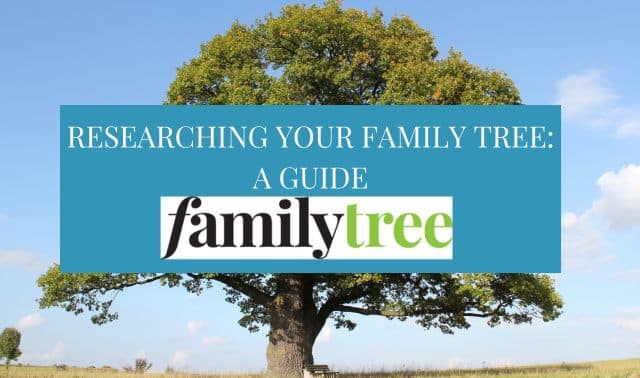Sign up for the Family Tree Newsletter! Plus, you’ll receive our 10 Essential Genealogy Research Forms PDF as a special thank you.
Get Your Free Genealogy Forms
"*" indicates required fields
This week, I had the pleasure of Skyping with a class of sixth graders working on a genealogy project. Here’s a photo their teacher Tweeted:
They’d already interviewed family members and done some research into census records, so after talking a little bit about how I got interested in genealogy and answering their questions, I suggested some “next steps” they could take.
We had to stop before I could really unleash my inner genealogy geek (lucky for my captive young audience!). I’ll add to the list here for you with tips from our Family History Starter Kit.
I think these tips work for all ages, whether you’re starting from scratch or you’ve done a little genealogy and you want to make sure you covered these steps:
- Look around your house (or your parents’ or another relative’s house, with permission) for “home sources”: old photos, letters, yearbooks, military discharge papers, etc.
- Try to find a relative in World War I draft registration records. This draft captured about 23 percent of the US population in 1917 and 1918; all men living in the United States between the ages of roughly 18 and 45 had to apply. That means if you had relatives in the United States at that time, there’s a good chance you’ll find someone. WWI draft records are free on FamilySearch.org. (And with the centennial of the start of World War I coming up, it’s a good time to learn about the experiences of ancestors of that era.)
- Find an old map of the place your family lived, and see if you can locate their home and where they went to school or work. It gives you a picture of the neighborhood and helps you see how it’s changed. The David Rumsey website has a huge collection of maps you can search by place and download for free (registration is required for very high-resolution versions).
- Go to the library in your ancestor’s hometown or visit the website and browse the local history and genealogy collection. All libraries are different, but you might find old city directories (which are like telephone books, not that today’s grade schoolers remember those), newspapers, books about the area, surname files of papers related to particular families, indexes to local records and more.
- Search for relatives’ graves in sites like Find A Grave, Interment.net and BillionGraves. Also look for death information in the Social Security Death Index, also free on FamilySearch.
- Run a place search of the FamilySearch online catalog so you an see what type of records are available for the places your family lived. See what’s digitized for free at FamilySearch.org for those places, too. Continue your place-based research by exploring the USGenWeb Project state and county pages for places your family lived.
- Make a family tree chart so you can see how everyone in your family fits together. You can do this on paper on a five-generation pedigree chart, in a genealogy software program, or on a family tree-building website. There are many websites where you can build a family tree (usually, for free), including FamilySearch.org, Ancestry.com, MyHeritage, Geni, and Tribal Pages. Find other options listed at Cyndi’s List.
- Start a research log with your genealogy to-do list of records you want to look up and databases you want to search. A spreadsheet works well for this, and you can note the record, ancestor’s name, repository or website, and other pertinent information.
In the general genealogy advice category, I would add:
- Gather information not only on parents, grandparents, great-grandparents, etc. (your ancestors), but also on aunts, uncles and cousins (your collateral relatives). Collateral relatives’ records could have information about your ancestors, and they’ll help you find distant relatives who are still living.
- Keep track of where you found each piece of new genealogy information. Write down the type of record; title of the microfilm, book, or online collection and website where you found it; author and publisher (a person and/or an organization); date and place of publication; the page number with the information; and date you accessed the website (if applicable).
What “next steps” and general advice would you suggest for a beginning genealogist?
The Family History Starter Kit is great for folks who want to start researching their family history or who’ve done a little genealogy and aren’t sure what to do next. The collection of how-to books, downloads and printed lessons have a friendly approach that guides you through those first steps—they’re full of tips you can start using right away to discover your family history. Learn more about it here.






